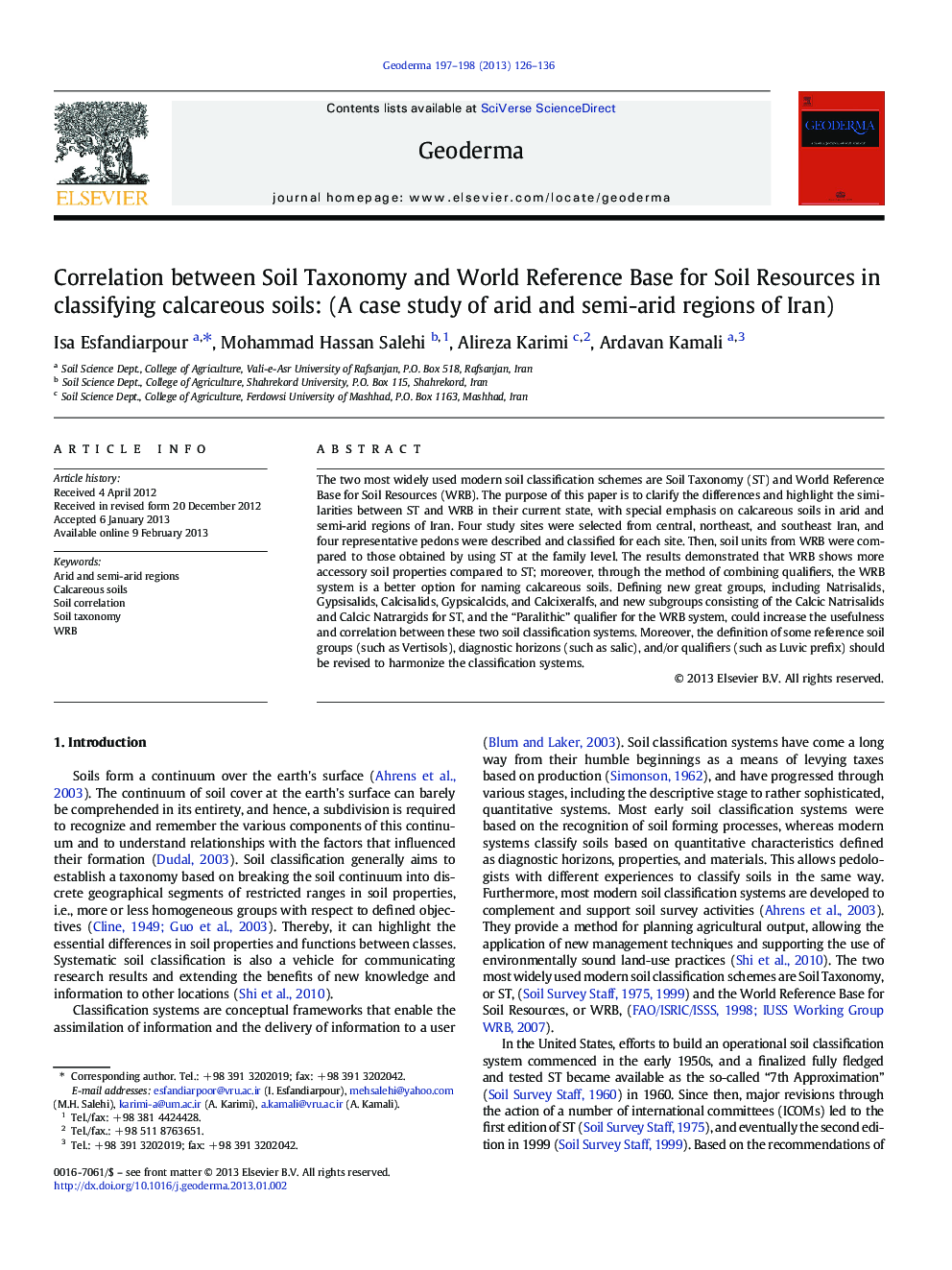| Article ID | Journal | Published Year | Pages | File Type |
|---|---|---|---|---|
| 4573733 | Geoderma | 2013 | 11 Pages |
The two most widely used modern soil classification schemes are Soil Taxonomy (ST) and World Reference Base for Soil Resources (WRB). The purpose of this paper is to clarify the differences and highlight the similarities between ST and WRB in their current state, with special emphasis on calcareous soils in arid and semi-arid regions of Iran. Four study sites were selected from central, northeast, and southeast Iran, and four representative pedons were described and classified for each site. Then, soil units from WRB were compared to those obtained by using ST at the family level. The results demonstrated that WRB shows more accessory soil properties compared to ST; moreover, through the method of combining qualifiers, the WRB system is a better option for naming calcareous soils. Defining new great groups, including Natrisalids, Gypsisalids, Calcisalids, Gypsicalcids, and Calcixeralfs, and new subgroups consisting of the Calcic Natrisalids and Calcic Natrargids for ST, and the “Paralithic” qualifier for the WRB system, could increase the usefulness and correlation between these two soil classification systems. Moreover, the definition of some reference soil groups (such as Vertisols), diagnostic horizons (such as salic), and/or qualifiers (such as Luvic prefix) should be revised to harmonize the classification systems.
► Comparison of ST and WRB systems for calcareous soils of Iran were clarified. ► The WRB system is a better option for naming calcareous soils. ► Adding information on clay mineralogy may enhance the usefulness of the WRB system. ► Defining new great groups and subgroups for ST can increase the systems' correlation. ► Addition of the new “Paralithic” qualifier has been proposed for WRB.
